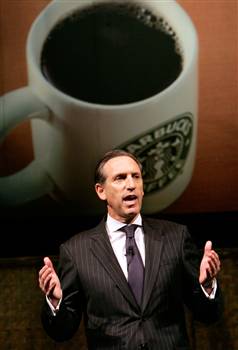Little Droplets of Humility
“Crisis management is the new black!” A good friend recently shared that revelation with me via email. I had to laugh, not only because I enjoy a witty fashion metaphor, but because I’ve also enjoyed watching crisis management come of age in the public consciousness. Even in this era of distrust and information saturation, people are warming up to the power of the sincere apology – a step toward redemption requiring that dollop of humility my partner Fred Garcia writes about. More and more, people are welcoming the forward arc of emotionally-intelligent, collaborative leadership on a global scale. Absolutely fabulous, I say!
What I find most fascinating about this public coming of age is the convergence of crisis management’s micro and macro levels. There was a time when you couldn’t talk about certain uncomfortably personal things like humility or emotions in the context of business. Where was the direct link to profits, after all? Now these personal things are being embraced as a positive economic life-force, whether they appear in the C-suite or on the factory floor.
For many people, the macro-sphere of crisis management is the easier level to recognize. It’s concerted organizational action when things go wrong. You can see a lot of it on television, in the papers and in the blogosphere. And, as we’ve witnessed, the hard currency consequences of a business crisis are swift, undeniable and often deadly. Working proactively to manage a crisis just makes good economic sense. Under such pressing circumstances, restoring revenues, share price and competitive position becomes an absolute mandate. And, afterwards, maintaining a vigilant and preventive course of crisis management becomes a priority for continued viability. People understand that.
Here’s the new part that’s emerging from the micro-sphere of crisis management: If an organization’s leader injects into the crisis situation a dollop of humility – as well as other interpersonally resonant emotions and conditions – he or she can ultimately create competitive advantage. Now, the business case for exercising holistic crisis management has become rock solid. In fact, as we counsel our clients, such an injection not only works, it amounts to executive leadership in its highest and best form.
So, what exactly is this micro-sphere of crisis management? Well, think individuals in the workplace, and then think little daily droplets of humility…
Crisis management on the micro level largely involves what we don’t see publicly but that I see on a daily basis as an executive coach. It involves strategic individual action that promotes career advancement and also elevates company morale. And, good morale is essential for concerted organizational action when things go wrong.
“I get great results for my company. Am I really in crisis?”
I often hear that question when I sit down with an executive coaching client for the first time. My answer: “Not necessarily…”— and I tend to pause there — “but you could be if you’re unwilling to make some incremental changes in your interpersonal style.”
At that point, I may spy an uplifted eyebrow and see the darting shadows of doubt in my client’s eyes. Generally we’re not sitting there because the person is in crisis. Senior management has usually called me in to help the individual rise to the next level, and generally my client and I do find a few adjustments would be helpful to getting there.
“Oh, it’s not just you,” I quickly add. “Even the most emotionally evolved executive can benefit from such changes. What I’d like for us to work on is enhancing your emotional intelligence. That means understanding that it’s not just about you.“ Tough talk? Maybe, but that’s where we have to begin.
The small changes I’m talking about often have to do with downplaying the greatness of self – even if it is well-deserved — and actively highlighting the accomplishments of others.
Initially, my clients may be skeptical and may not want to talk about all that “soft stuff.” And so, my recommendations about setting the right emotional tone for others in their work environment can sometimes linger in the silence … in the beginning. My proclamations about the proven “soft currency” contributions of empathy, compassion and collaboration to the bottom line sometimes don’t have the desired impact…at least not right away. But I persevere, and to their credit, so do my clients. What I emphasize is that there in the micro-sphere of crisis management, things happen on a personal – and deeply interpersonal — level. Bad things, in particular, tend to happen insidiously, just outside the scope of our constant gaze. Good personal crisis management calls for deeper awareness of things that fall into the emotional realm, whether we like it or not.
Let me state for the record: the executives I work with are exceptionally motivated to succeed. They often make constructive changes in their behavior because they appreciate the need for corrective action when things might go wrong and the insurance of preventive measures when they are running smoothly. When the aha! moment kicks in, they start listening to everyone more carefully, they become more aware of themselves and others, and they work much harder to understand opposing points of view.
But the challenge always lurks in the stress points – not the great, big ones that happen publicly — but those little, ordinary, everyday ones that, over time, can suck the life out of an otherwise great reputation and career. During these times executives often go back – sometimes involuntarily — to a default position that doesn’t quite work. The most effective executives, on the other hand, grit their teeth through the stress, steadily recalibrate their default setting, and, in the process, set an emotionally resonant tone that influences others for the greater good of corporate life. Again, that’s leadership in its highest and best form.
And, speaking of the new black (coffee)….you may be wondering why I’ve attached Howard Schultz’s picture to my post. For me, Schultz represents the convergence of the macro and micro-spheres of crisis management through collaborative leadership. If you’ve read his book, Pour Your Heart Into It: How Starbucks Built a Company One Cup at a Time, and followed his publicly expressed thoughts on how to create a truly collaborative workplace, you might wonder like I do if Starbucks, in bringing him back as CEO, is looking to recapture an emotionally resonant tone in-house as well as sustainable profitability for its ubiquitous stores. All the media coverage has focused on the company’s apparent desire to return to its seminal strategy of creating an ambient experience for its customers. I’m curious whether over the years, as Starbucks has enjoyed such phenomenal success, there’s been a corresponding shift in the company’s strategy of giving a highly interactive voice to its employees. Schultz has spoken passionately on how working collaboratively with employee/partners helps to create a distinctive company environment, one that empowers them to passionately support the company, even when things go off-course.
Yes, a dollop of humility in the midst of a very public crisis goes a long way. At the same time, let’s not forget the monumental importance of all those little droplets of humility applied daily in the ordinary course.
Now, that’s crisis management fashion we can bank on in all seasons.




Leave a Reply
Want to join the discussion?Feel free to contribute!